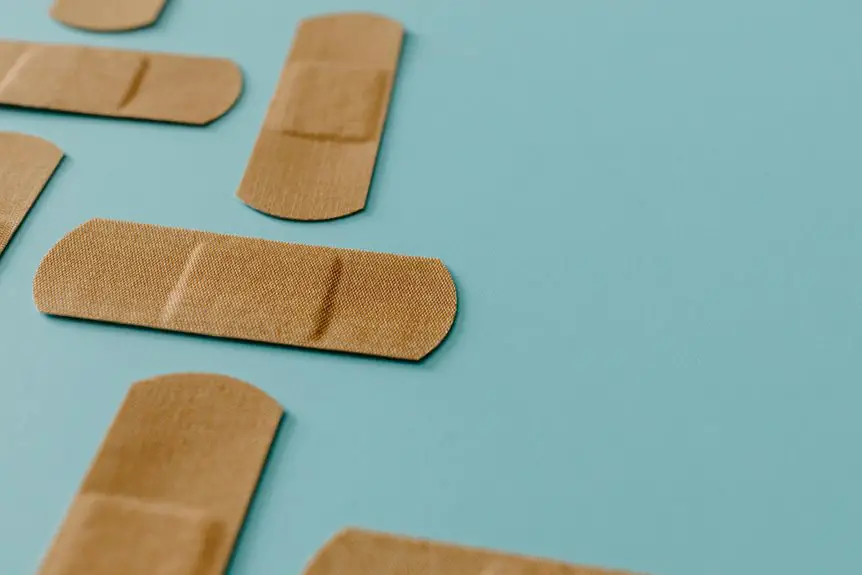Fabric shrinkage happens when fibers contract due to heat, moisture, and agitation from washing. Natural fibers like cotton and wool are more vulnerable than synthetic ones. To prevent shrinkage, always check care labels, wash in cold water, and air dry or use low heat. Remember, factors like weave type and garment construction can influence shrinkage too. Discover more about how to effectively manage and measure shrinkage for your favorite clothes.
Table of Contents
Key Takeaways
- Fabric shrinkage is primarily caused by the contraction of natural fibers when exposed to heat and moisture during washing.
- Natural fibers, like cotton and wool, are more prone to shrinkage compared to synthetic fibers due to their structural properties.
- To prevent shrinkage, always check care labels and wash garments in cold water with gentle cycles.
- Air drying or using low-heat settings in the dryer can significantly reduce the risk of fabric shrinkage.
- Pre-shrinking fabrics before sewing and avoiding overloading the washer helps maintain garment size and fit.
Causes of Fabric Shrinkage
When you wash or dry your clothes, you might notice they sometimes shrink, and understanding the causes can help you prevent it.
Fabric shrinkage primarily occurs due to the structure of the fibers. Natural fibers like cotton and wool have a tendency to contract when exposed to heat and moisture. The agitation from washing machines can also contribute to this process, as it disturbs the fiber arrangement.
If you’re using high temperatures or a vigorous wash cycle, you’re more likely to see shrinkage. Additionally, pre-shrunk fabrics can still shrink further if they haven’t been properly treated.
Factors Influencing Shrinkage
Understanding the factors influencing shrinkage can help you maintain the size and shape of your garments.
One key factor is the fabric type; natural fibers like cotton and wool tend to shrink more than synthetic fibers. The weave or knit structure also plays a role—tighter weaves generally resist shrinkage better.
Natural fibers such as cotton and wool are more prone to shrinkage compared to synthetic fibers, with tighter weaves offering better resistance.
Additionally, the way the fabric is treated during manufacturing can affect its stability. Temperature and moisture during washing and drying are essential; hot water and high heat can exacerbate shrinkage.
Finally, the garment’s construction can influence how it responds to these conditions. By being aware of these factors, you can make informed choices that minimize shrinkage and keep your clothes looking their best.
Prevention Strategies for Shrinkage
To keep your garments looking their best, implementing effective prevention strategies for shrinkage is important.
Start by checking care labels before washing. Use cold water instead of hot, as it helps minimize shrinkage.
When drying, opt for air drying or a low-heat setting in the dryer. High heat can cause fabrics to shrink more.
Additionally, consider pre-shrinking fabrics before sewing if you’re making clothing. You can also wash new items separately the first time to prevent any potential shrinkage from affecting other garments.
Finally, avoid overloading your washer, as this can lead to uneven washing and increased friction, resulting in more shrinkage.
Effects of Shrinkage on Fabrics
Shrinkage can greatly impact the fit and appearance of your fabrics, often leading to disappointment with your clothing. When a garment shrinks, it may no longer fit as intended, making it uncomfortable or unflattering. This change can affect everything from the length of sleeves to the overall silhouette, causing frustration during wear.
Additionally, shrinkage can alter the texture and drape of the fabric, diminishing its original aesthetic appeal. Colors might appear different as the fabric tightens, and seams may strain, risking potential damage.
Ultimately, shrinkage can reduce the lifespan of your favorite pieces, forcing you to buy replacements or make costly alterations. Understanding these effects can help you choose fabrics wisely and care for them properly.
Measurement and Analysis of Shrinkage
The impact of shrinkage on fabric highlights the importance of accurately measuring and analyzing its effects. To effectively assess shrinkage, you should start by taking precise measurements of the fabric before and after washing.
Use a ruler or measuring tape to record the dimensions in both dry and wet states. Next, calculate the percentage of shrinkage by using the formula: (original length – new length) / original length x 100. This will give you a clear understanding of how much the fabric has contracted.
Additionally, analyze various factors like washing temperature, drying methods, and fabric composition. By keeping track of these variables, you can better predict shrinkage in future fabric treatments and make informed decisions on care practices to minimize shrinkage effects.
Frequently Asked Questions
Can All Fabrics Shrink, or Are Some Immune to Shrinkage?
Can you imagine a world where all fabrics stay the same size? While some fabrics, like polyester, resist shrinkage better than others, most can shrink under specific conditions, so it’s wise to check care labels.
How Can I Test a Fabric’s Shrinkage Potential Before Purchasing?
To test a fabric’s shrinkage potential before buying, you can wash a small swatch in cold water, then measure it after drying. This’ll give you a clear idea of how much it might shrink.
Do Different Colors of the Same Fabric Shrink Differently?
Yes, different colors of the same fabric can shrink differently. The dyeing process might affect fiber properties, leading to variations in shrinkage. Testing samples can help you determine how each color behaves before purchasing.
Is There a Specific Fabric Type That Shrinks the Most?
If you think your favorite cotton shirt won’t shrink, think again! Cotton’s the heavyweight champ of shrinkage. You’ll find it’s the most notorious fabric for transforming into a snug fit after washing.
Can Fabric Shrinkage Be Reversed After It Has Occurred?
No, you can’t completely reverse fabric shrinkage once it’s happened. However, you can try stretching the fabric gently while damp or using fabric relaxers to help restore some of its original shape and size.
- What Is the Low-Dye Technique Used to Support? (Podiatry) - July 13, 2025
- Mastering the I-Dye Technique for Disc Golf Discs - July 13, 2025
- The Science of Dyeing: How to Separate Dyes With Chromatography - July 13, 2025




